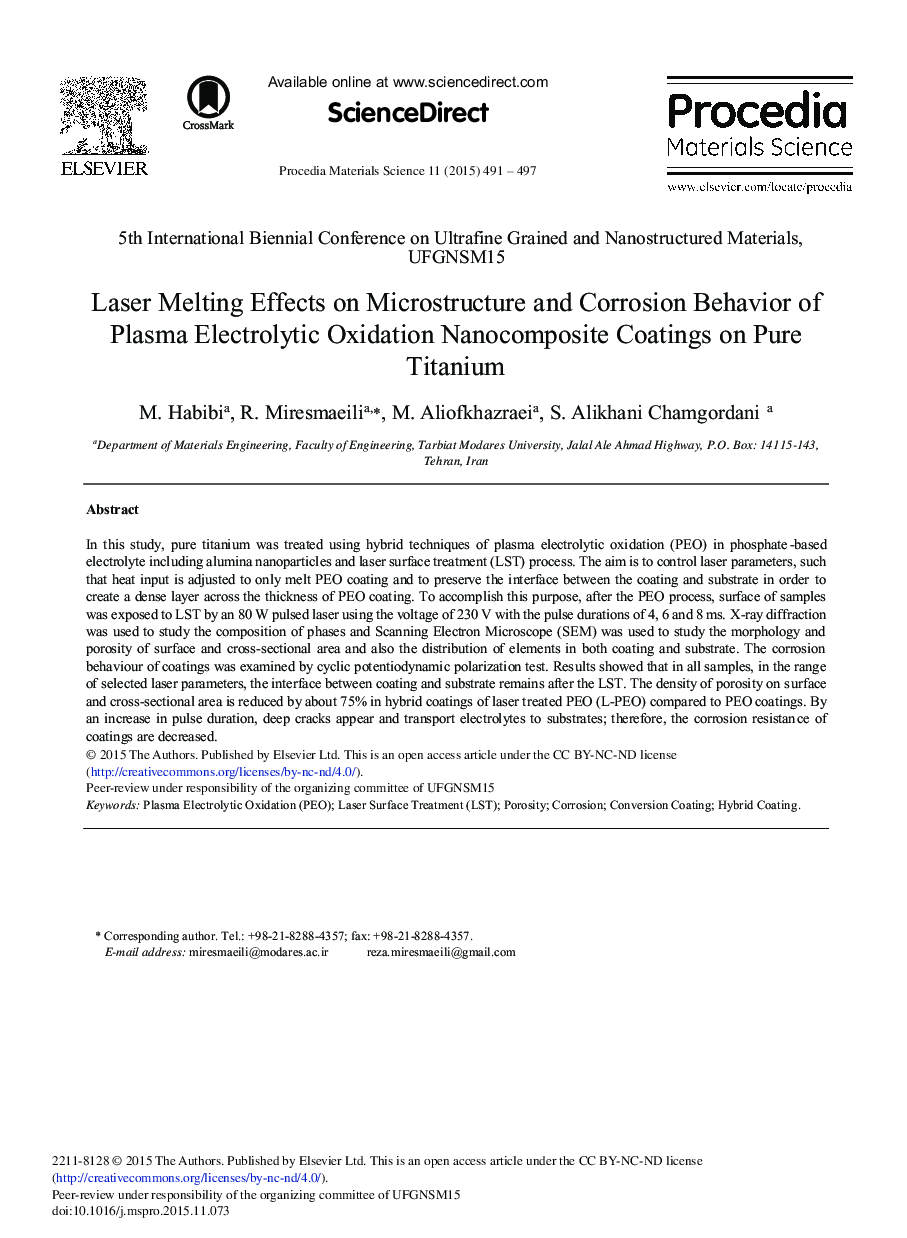| Article ID | Journal | Published Year | Pages | File Type |
|---|---|---|---|---|
| 1634100 | Procedia Materials Science | 2015 | 7 Pages |
In this study, pure titanium was treated using hybrid techniques of plasma electrolytic oxidation (PEO) in phosphate-based electrolyte including alumina nanoparticles and laser surface treatment (LST) process. The aim is to control laser parameters, such that heat input is adjusted to only melt PEO coating and to preserve the interface between the coating and substrate in order to create a dense layer across the thickness of PEO coating. To accomplish this purpose, after the PEO process, surface of samples was exposed to LST by an 80 W pulsed laser using the voltage of 230 V with the pulse durations of 4, 6 and 8 ms. X-ray diffraction was used to study the composition of phases and Scanning Electron Microscope (SEM) was used to study the morphology and porosity of surface and cross-sectional area and also the distribution of elements in both coating and substrate. The corrosion behaviour of coatings was examined by cyclic potentiodynamic polarization test. Results showed that in all samples, in the range of selected laser parameters, the interface between coating and substrate remains after the LST. The density of porosity on surface and cross-sectional area is reduced by about 75% in hybrid coatings of laser treated PEO (L-PEO) compared to PEO coatings. By an increase in pulse duration, deep cracks appear and transport electrolytes to substrates; therefore, the corrosion resistance of coatings are decreased.
